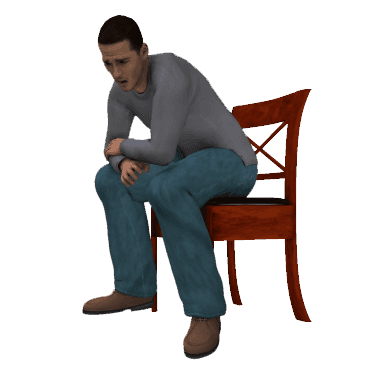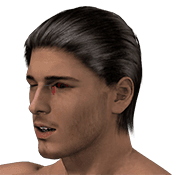Progress
Online First Aid | Injuries | Shock
Shock
A person may go into shock when they lose a large amount of blood, have a heart attack, a severe infection, or allergic reaction. It's important to recognize the Signs of Shock.
Bleeding From the Nose
To stop a nosebleed, follow these steps:
- ● Make sure the scene is safe
- ● Put on your PPE
- ● Have the person sit and lean forward
- ● Pinch the soft part of the nose on both sides with a clean dressing
- ● Place constant pressure on the nostrils. If bleeding doesn’t stop within a few minutes, press harder
Call 9-9-1 if:
- ● You can’t stop the bleeding after 15 minutes
- ● The bleeding is very heavy
- ● The person is having trouble breathing
A person with a nosebleed should always lean forward. If they lean backward, you will see less blood, but only because it’s draining down that person’s throat, which can result in vomiting.
Bleeding from the Mouth
A mouth injury can become serious if blood or broken teeth end up blocking the airway. Like with nosebleeds, the bleeding may be stopped by applying pressure.
When someone is bleeding from their mouth:
- ● Make sure the scene is safe
- ● Get the first aid kit
- ● Put on PPE
- ● If bleeding is coming from the lip, cheek, or tongue, and you can easily reach it, apply pressure with a gauze or cloth
- ● If you can’t stop the bleeding yourself, or the person is having trouble breathing, call 9-1-1 if you haven’t already done so
Tooth Injuries
Teeth that are broken, loose, or knocked out can become choking hazards. When someone suffers a tooth injury, follow these steps:
- ● Make sure that the scene is safe
- ● Get the first aid kit
- ● Put on PPE
- ● Check their mouths for missing, loose or broken teeth
- ● If a tooth is chipped, carefully clean it and contact a dentist
- ● If a tooth has been knocked loose, have them bite down on a piece of gauze to hold it in place, while you call a dentist
- ● If a tooth has fallen out, there’s a chance that a dentist will be able to reattach it. Hold the tooth by the crown (the top) instead of the root
- ● Use gauze and apply pressure to stop bleeding in the empty tooth socket
- ● Clean the area with water or saline
- ● Store the tooth in coconut water, whole milk or egg white. If none of these things are available, store it in a container with the person’s saliva
- ● Take the person to an emergency department or dentist as soon as possible
Eye InjuriesEye injuries are common first aid emergencies that can potentially lead to big problems, especially if left untreated. Common signs of an eye injury include pain, bruising, bleeding, swelling, and difficulty seeing. If a person’s eye has been hit hard or punctured, call 9-1-1 immediately. When helping someone who has sustained an eye injury:
|
Electrical Injuries
Electricity can cause burns on the inside of the body as well as the outside, injuring organs. Sometimes there will be marks showing where it entered and exited the body. Electricity can be highly dangerous. It can even stop a person’s breathing or send them into cardiac arrest.
If an electrical injury is caused by high voltage, such as a fallen power line, the scene probably isn’t safe. Notify the proper authorities, and call 9-1-1. Do not try to enter the area or move wires until the power is turned off.
CAUTION: Electricity can flow from its source, through one person, and into another. Because of this, you should never touch a person if they still have contact with the power source. The power needs to be turned off first. Do not attempt this unless you are trained to do so.
To help someone who has received an electrical injury:
- ● Make sure the scene is safe
- ● Get the first aid kit and AED
- ● Put on your PPE
- ● Once it’s completely safe to touch the injured person, give CPR if needed
Anyone who has received an electrical injury should be checked out by a healthcare provider.
Instructor: Mike Figuero
Publish Date: 2022-04-02
Last Updated: 2022-07-18

